This review was provided for free, but Schwinn supplied a temporary demo bike for me to test. My goal is to be transparent and unbiased with you, this video and writeup are not meant to be an endorsement of Schwinn products. I welcome your corrections, additions, and feedback in the comments below, and the Schwinn electric bike forums.
Observations:
- Schwinn Coston DX 27.5 comes in two frame styles (high-step and step-thru) and two colors each! It has a custom downtube-integrated battery pack with light strips along each side to enhance your visual footprint. For a bit less money, Schwinn sells the Coston CE 27.5 with a smaller 288 watt hour battery pack (vs. 360wh on the DX) and it also skips the rear rack. For even less money, Schwinn sells the Marshall 27.5 that has the smaller battery, no fenders or rear rack or chain cover, and it only comes in the mid-step frame style.
- Schwinn is a historically important brand, as it is one of the first and largest bicycle companies in the USA. It was started in 1895 by a German engineer in the Chicago area, but was sold to Pacific Cycling Group in 1992. I’ve covered other Schwinn ebikes in recent years, and they seem to be focusing on the casual/lifestyle segment with an emphasis on affordability.
Pros:
- It’s impressive to see such a purpose-built electric bike at the $2k price point, especially in two sizes and two colors! Schwinn also offers a step-thru version of the Coston DX, and two more affordable variations called the Coston CE and Marshall as well.
- The bike is feature complete with fenders, a rear rack, and impressive integrated lights. You could ride it rain or shine, and haul cargo for school, work, or general activities. To cycle through the different light modes, just hold the + button again (front and rear only, front and rear with battery light strips, battery light strips only)
- I appreciate that the display panel is backlit (kind of a blue glow) but also goes darker whenever the lights are activated! This way it isn’t as distracting at night and won’t ruin your night vision.
- I like how the battery pack has a safety stop when being unlocked, even though the slider to release it from there is a bit tricky to reach at times. This battery design reminds me of the Bosch PowerTube, which has a similar safety stop and similar small release button. I like that the battery can easily be clicked back into place here vs. having to twist the key and push into place. It’s actually a very convenient design and I love how the casing matches the bike paint colors.
- The battery can be charged on or off the bike frame and the charger, while basic in terms of speed, is very compact and light weight at just one pound.
- All of the cabling and electrical wires are hidden on this frame, it looks great for such a value price point. I appreciate that both brake levers have motor inhibitors for safety when stopping.
- The tire size of 27.5″ x 2.6″ is commonly found on mountain bikes because it adds traction, stability, and comfort off-road. You get these same benefits on the Schwinn Coston DX, and that’s really nice considering there is no suspension fork. I also appreciate the adjustable suspension seat post.
- The plus sized tires offer a range of air pressure (25 to 45 PSI), so you can lower them to improve comfort while sacrificing some efficiency and range. I did not see reflective stripes, but the light bars on the battery pack make up for this, and I also did not see puncture protection (so be thoughtful when riding near thorns or glass).
- Even though the derailleur and shifter are from microSHIFT vs. Shimano or SRAM (which seem to be more recognized brands), the drivetrain worked well. I appreciate the wider 14 to 34 tooth freewheel vs. just 14 to 28 tooth that I see on many competing affordable electric bikes. Nice chainring guard and chain cover here too! Both look nice, help to keep the chain on track, and keep your pants or dress ends clean and snag-free.
- The handlebar is a high-rise design that provides a more upright body position for comfort. I like the ergonomic grips too, even though they are very cheap and do not lock into place, they still felt good and worked fine.
- The frame felt rigid and sturdy. While there was no maximum weight capacity listed in the specs, it seems like a bike that can handle a good amount of weight. I noticed a gusset joining the top tube to the seat tube on the high-step and an extra tube at the base of the step-thru as well, so it’s probably fairly stiff, especially with the thicker angular downtube design.
- I love that both frame styles offer bottle cage mounts on the downtube. This is something that gets overlooked by some of the more affordable elctric bicycles at times.
- Decent kickstand design and positioning, I appreciate that it doesn’t cause pedal lock with the left crank arm and also offers some length adjustability so you can make sure the bike is steady when parked.
- Schwinn chose to use a 12 magnet sealed cadence sensor (mounted around the spindle at the bottom bracket on the left side of the bike). These tend to be responsive and durable, so the ride feel is natural and reliable.
- Unique lifetime limited warranty covers everything against manufacture defect and normal wear and tear. As one of the oldest bicycle companies around, there’s a good track record and they really seem to be investing in the electric bicycle space.
- Even though the pedals are plastic, they offer a large surface area and felt stiff and sturdy. Some cheap pedals aren’t as comfortable or functional as the ones Schwinn chose.
Cons:
- I wish the rear rack had a weight limit rating stamped on it somewhere. Please comment if you find a rating, I’m used to seeing 25kg which is about 55lbs, so I’d probably aim for 50lbs or less just to be on the safe side.
- Since the rear rack is kind of angled vs. being a perfect rectangle, it might not work for some child seats and other heavy duty accessories. I’d probably use it with pannier bags or a trunk bag. I wish it had bungee loops at the bottom, but appreciate how it connects directly to the fender for a nice clean look.
- There are two steps to activate this electric bike. The first is a circular power button at the base of the battery pack (which is exposed on the underside of the downtube). This requires reaching down or even bending down, will probably get your hand or finger dirty if the bike has been ridden through dust, and makes it easy to bump your head on the handlebar when looking back up (or standing back up). At least the front fender should keep the button and downtube from getting super dirty, but the fender isn’t extra long, so I suspect it could still get a little dusty and muddy over time.
- The trigger throttle is variable speed, meaning it delivers more power the further it is pressed. However, the maximum power and speed offered is limited by the chosen level of assist. To me, this is disappointing because I prefer to keep pedal assist in a low efficient level and use the throttle for busts of power or speed. As it stands, you need to click the PAS level up for more power, then do the throttle and that’s just an extra step and extra distraction in my opinion.
- I weighed this ebike at 61.6lbs, and it appeared to be the large size frame. This is fairly heavy for a rigid frame with no suspension fork. I appreciate that it does have a suspension seatpost. The high weight is probably due to the custom battery design, larger plus sized 2.6″ tires, high-rise handlebar with cross support tube, unique storage-box saddle, thick metal fenders, and lights… but for such a low battery capacity of 360wh I still consider the bike to be on the heavy side.
- This is a minor complaint, and a fairly common design compromise I see… but the charging port for the battery pack when mounted to the bike is low on the left side, near the path of the crank arm. This requires bending down, and could lead to snags or breaking the charge port if the crank or pedal snag the charging cable while plugged in.
- Since the saddle is a bit tall (due to the box storage feature), and the suspension fork needs room to travel (about 40mm) the minimum saddle height for this ebike is fairly high at 39.5″ and that’s probably true for the step-thru models as well. So, even if you can stand over the frame itself, you might have to step up onto the pedal and push forward to get yourself high enough to sit down (if you have a shorter inseam). Given the higher weight of the bike, this could add a bit of uncertainty or instability to some riders.
- The bike is using mechanical disc vs. hydraulic brakes, which tend to require more hand effort to actuate. The rotors are pretty standard or even a little bit small at 160mm given the weight of the bike.
- All things considered, this seems like a casual neighborhood type of electric bike due to the relatively conservative battery capacity and 250 watt motor power. In a way, they match so it’s not like a power hungry motor is paired with a smaller battery, they are both on the small side.
- Be extra careful with the motor power cable that protrudes from the right side of the rear axle. This, along with the derailleur cables and derailleur, are the sensitive parts of the bike and could get snagged or cut if the bike tipped over or came too close to sticks or other trail debris.
- The rear light is kind of basic with just one LED, it’s mounted kind of low (so won’t be as visible to other cyclists or cars), and is not really protected by the fender or rack – it sticks out beyond the metal of the fender and could get broken more easily as a result.

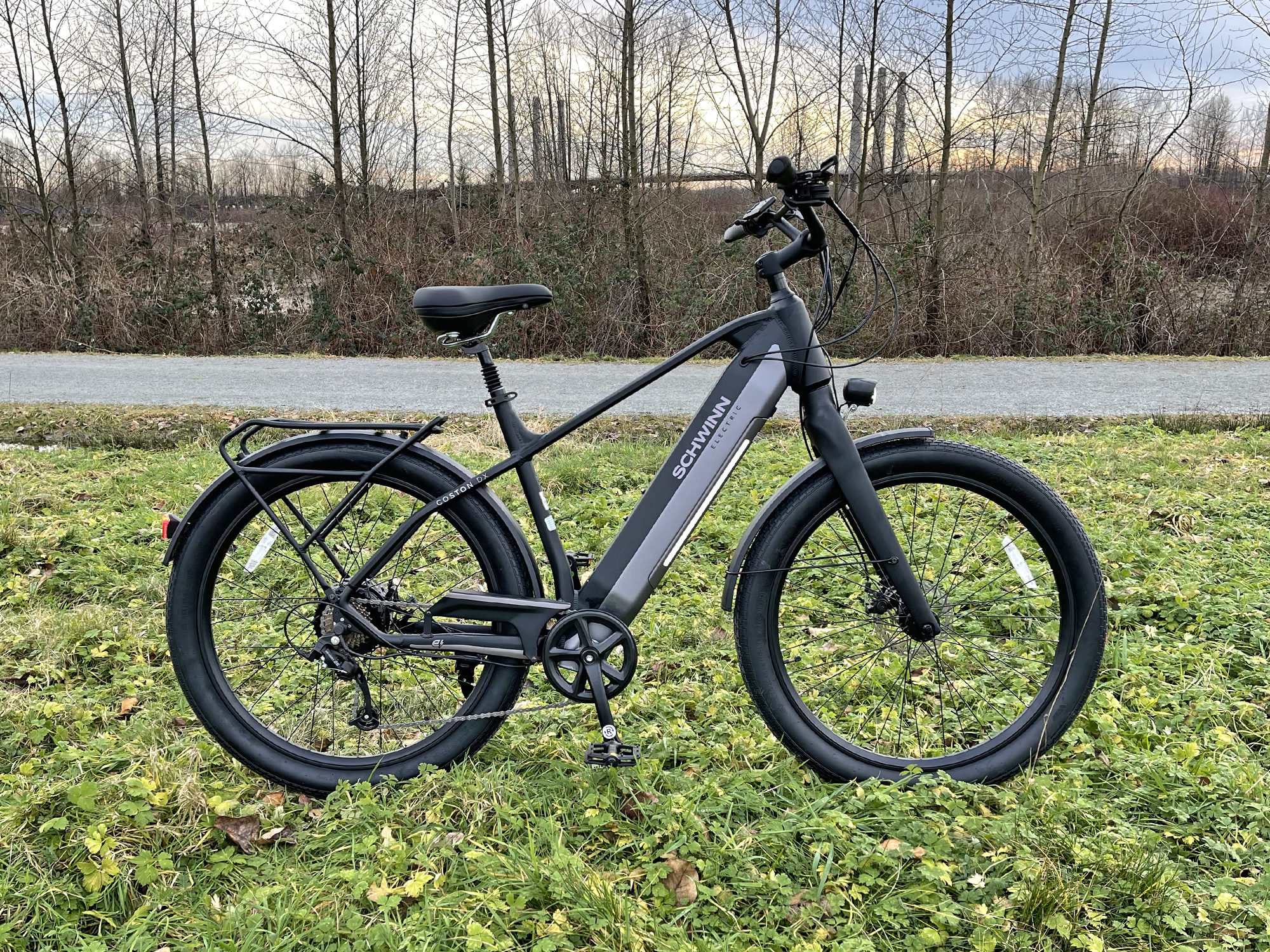
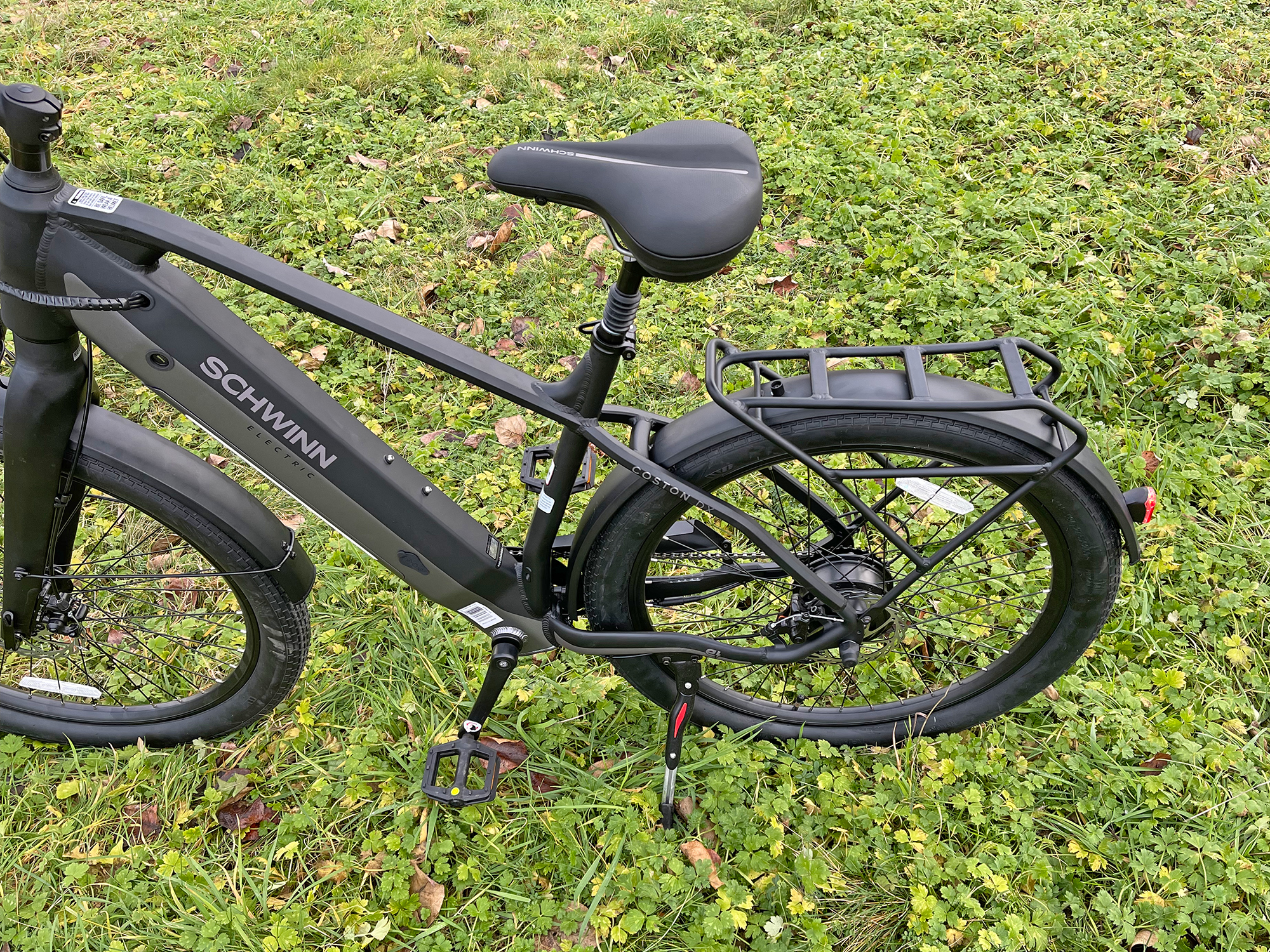

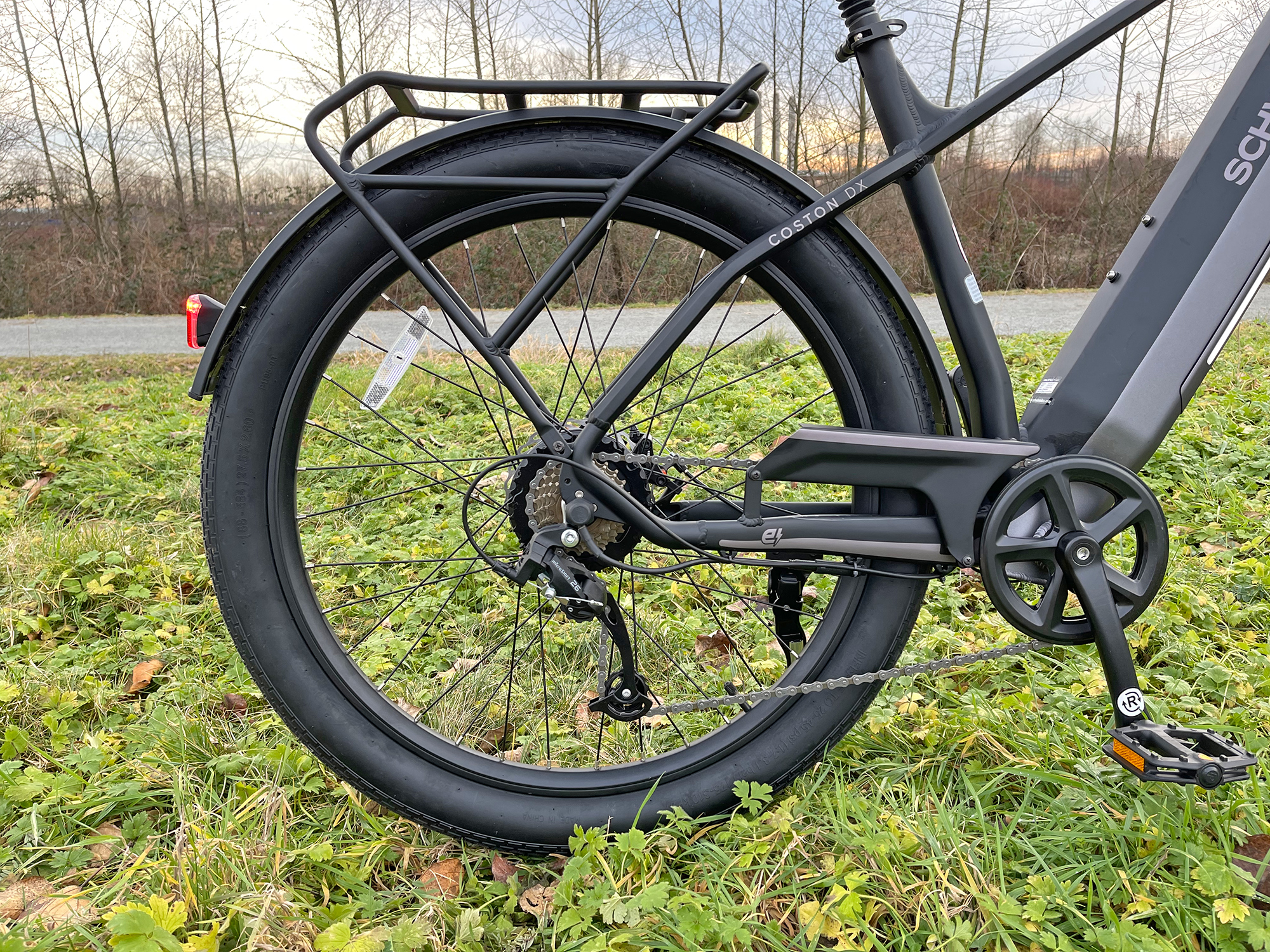
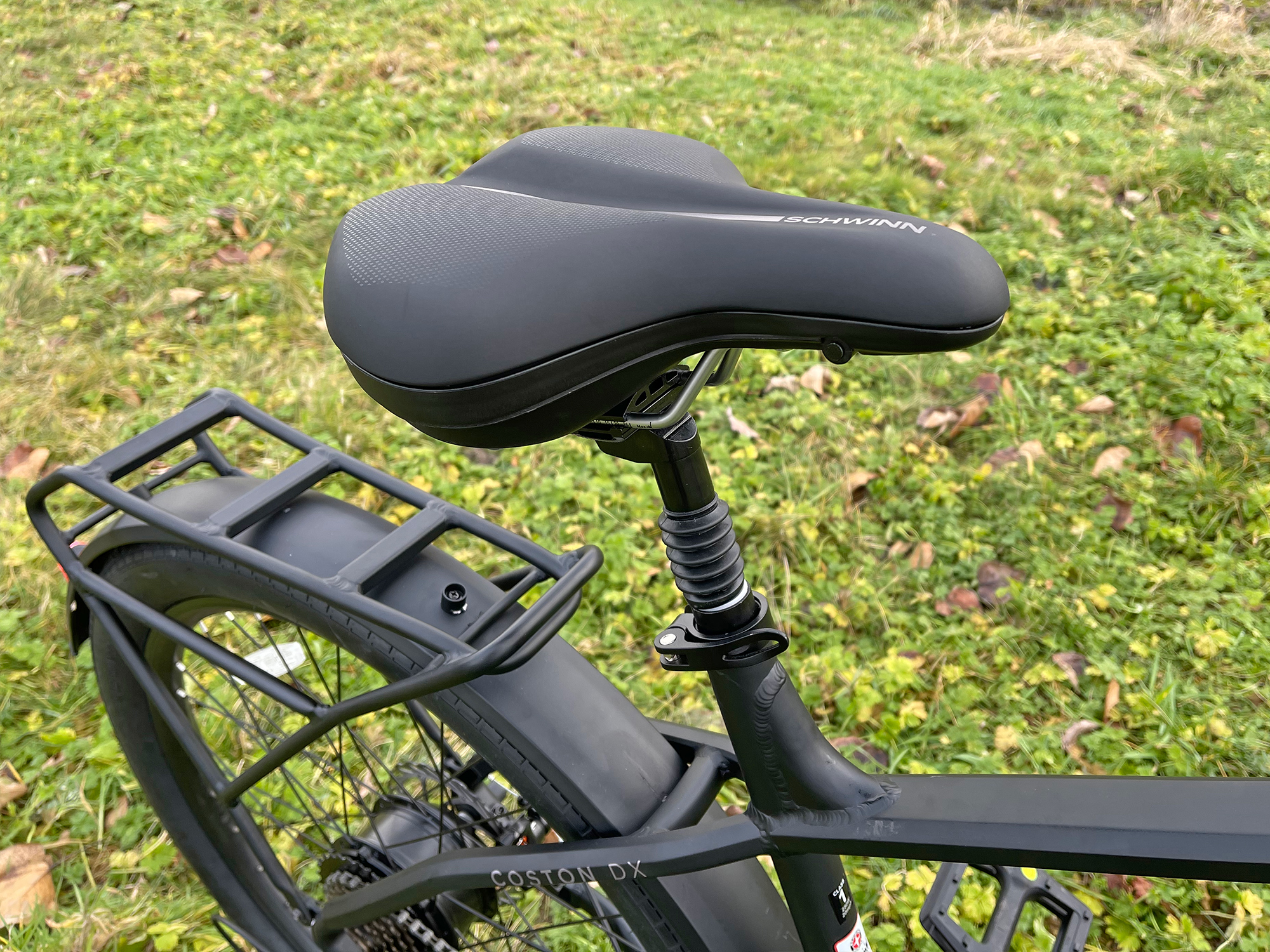

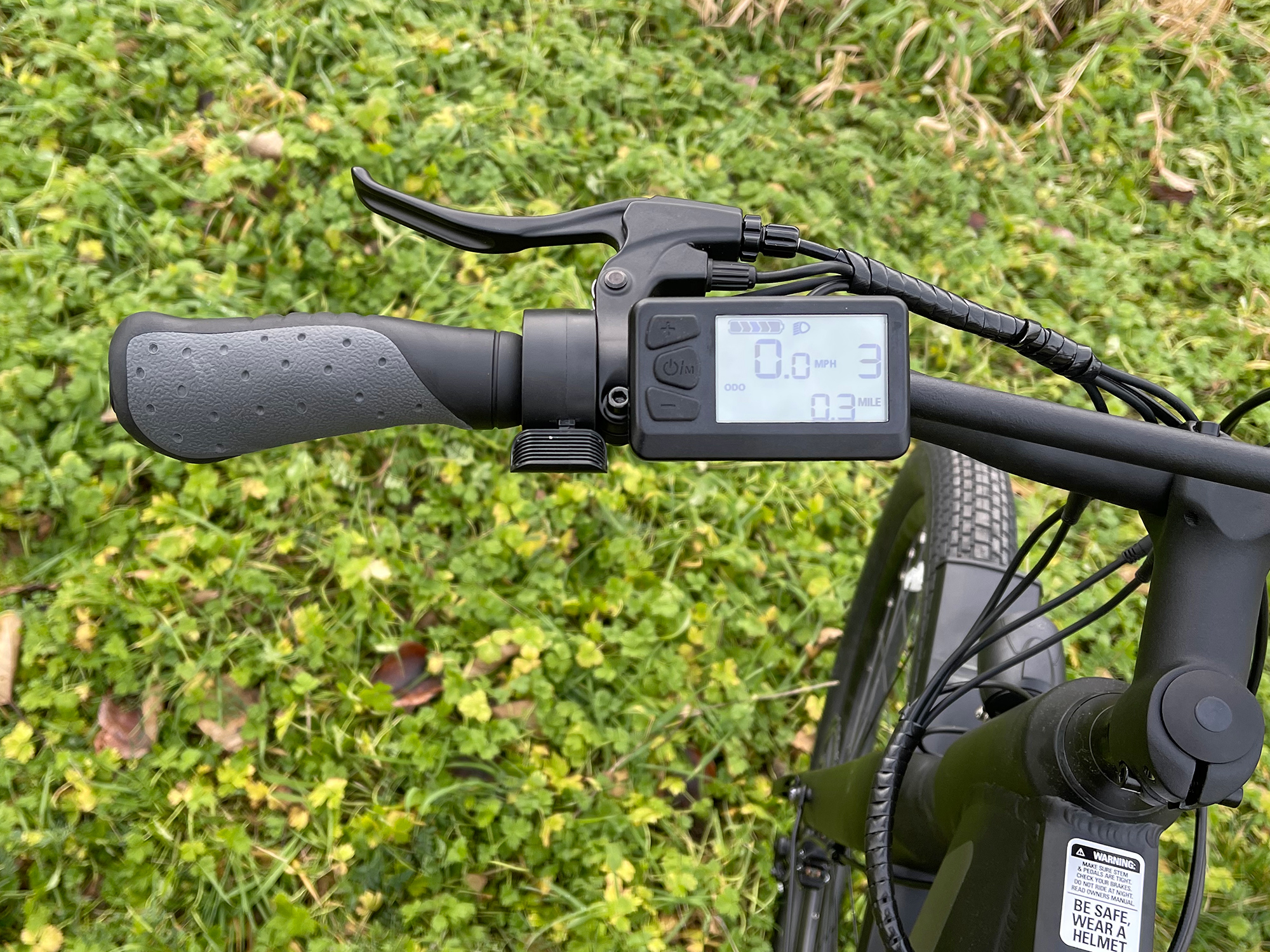
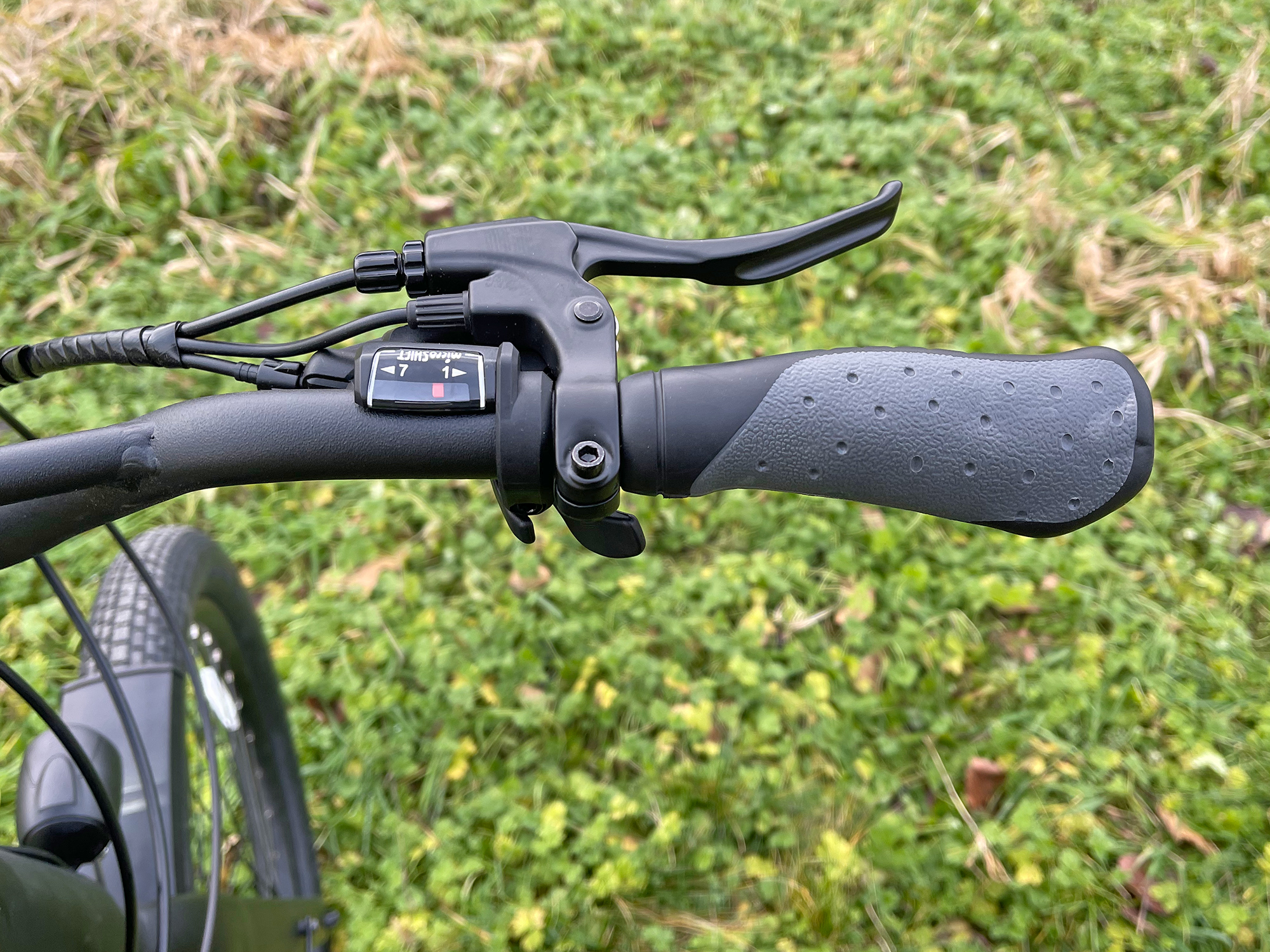
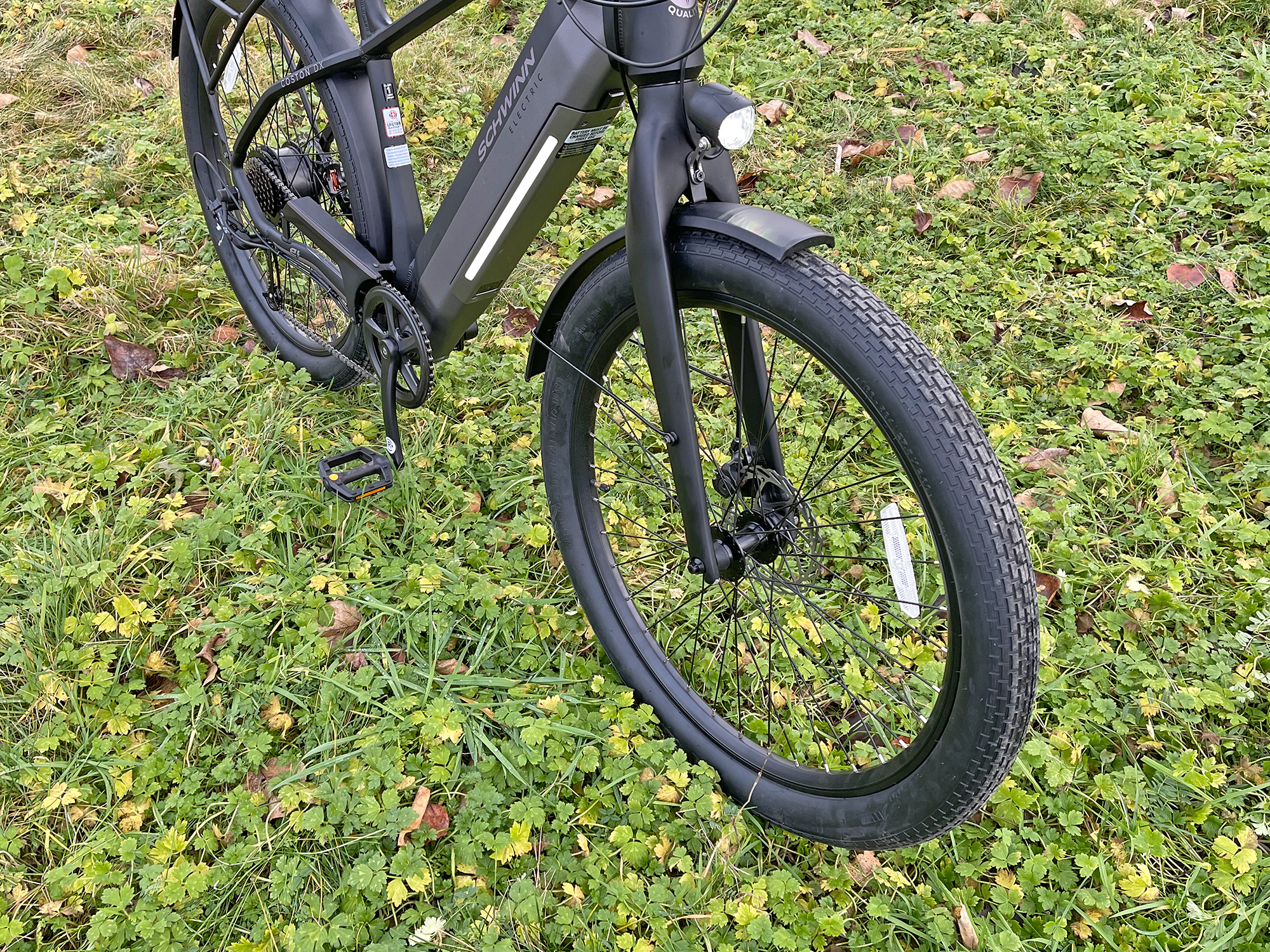
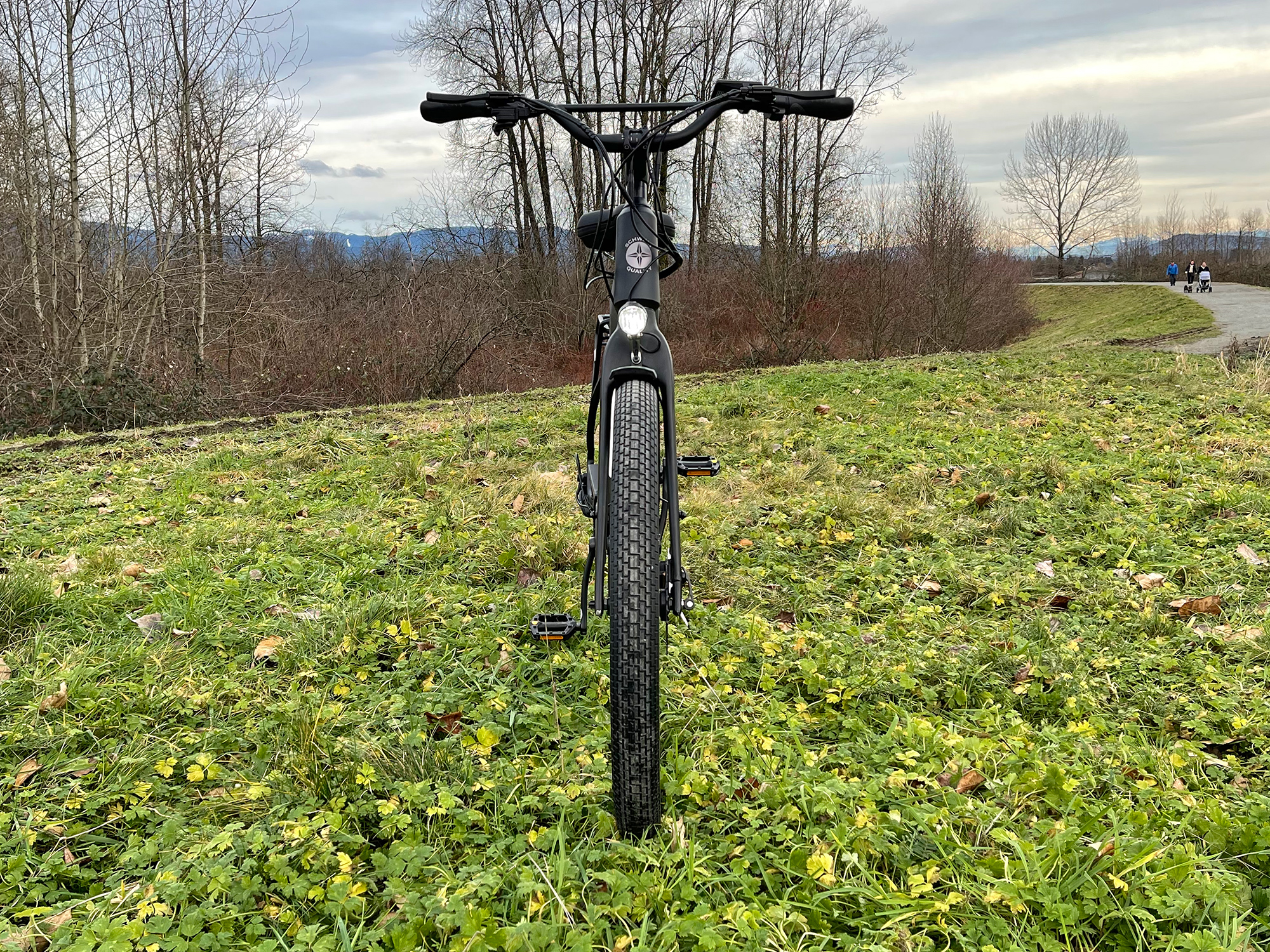
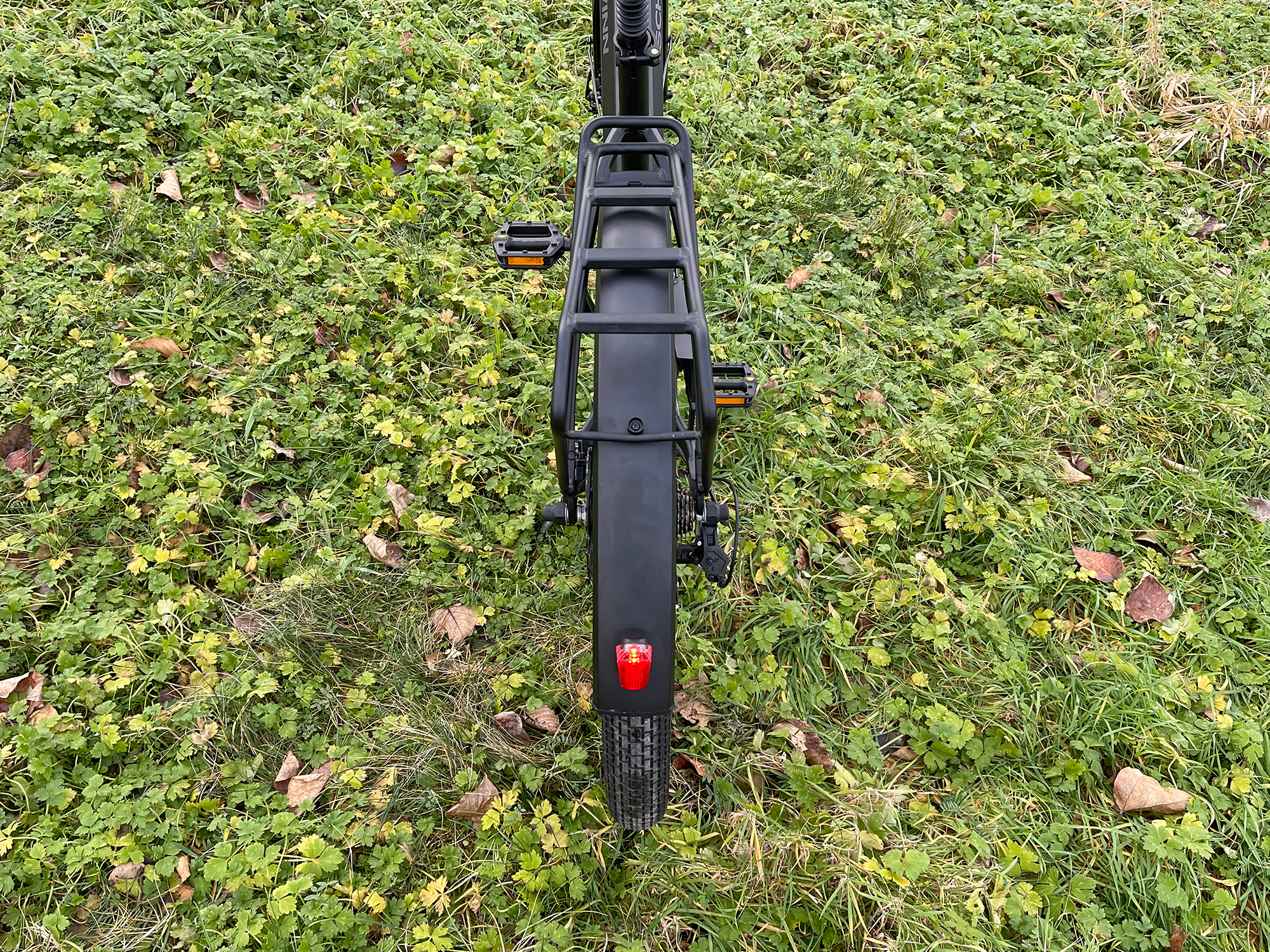
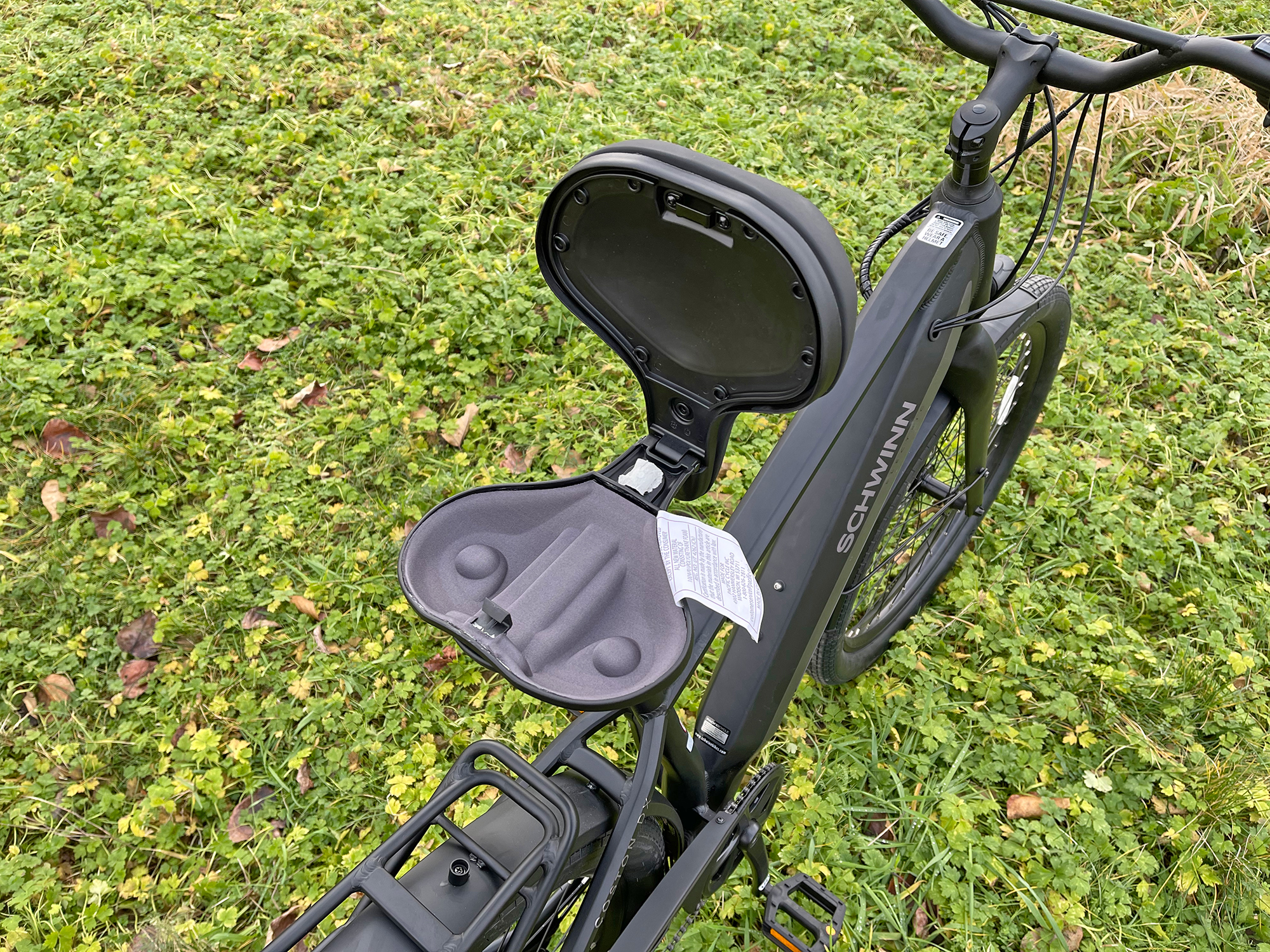

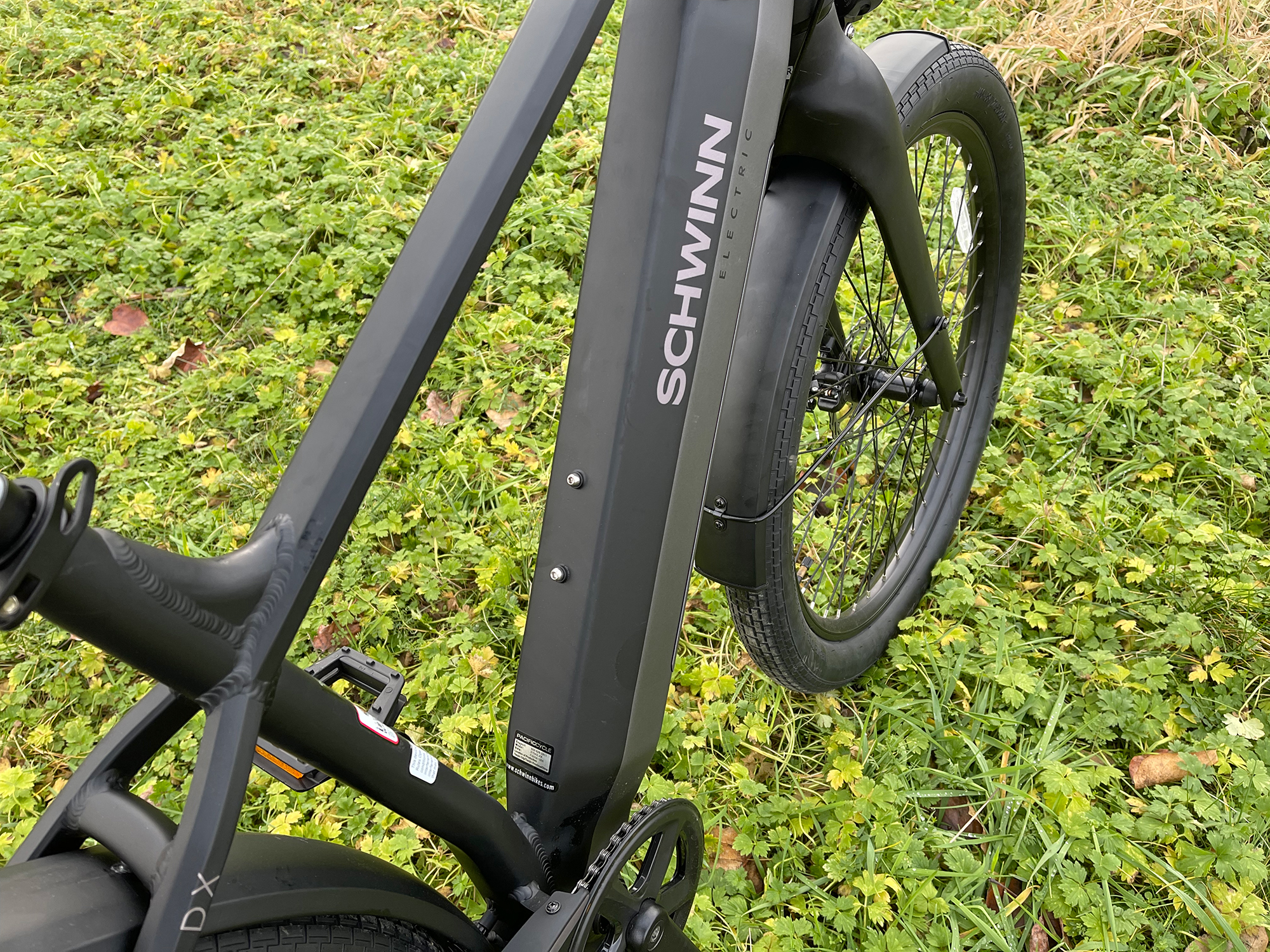
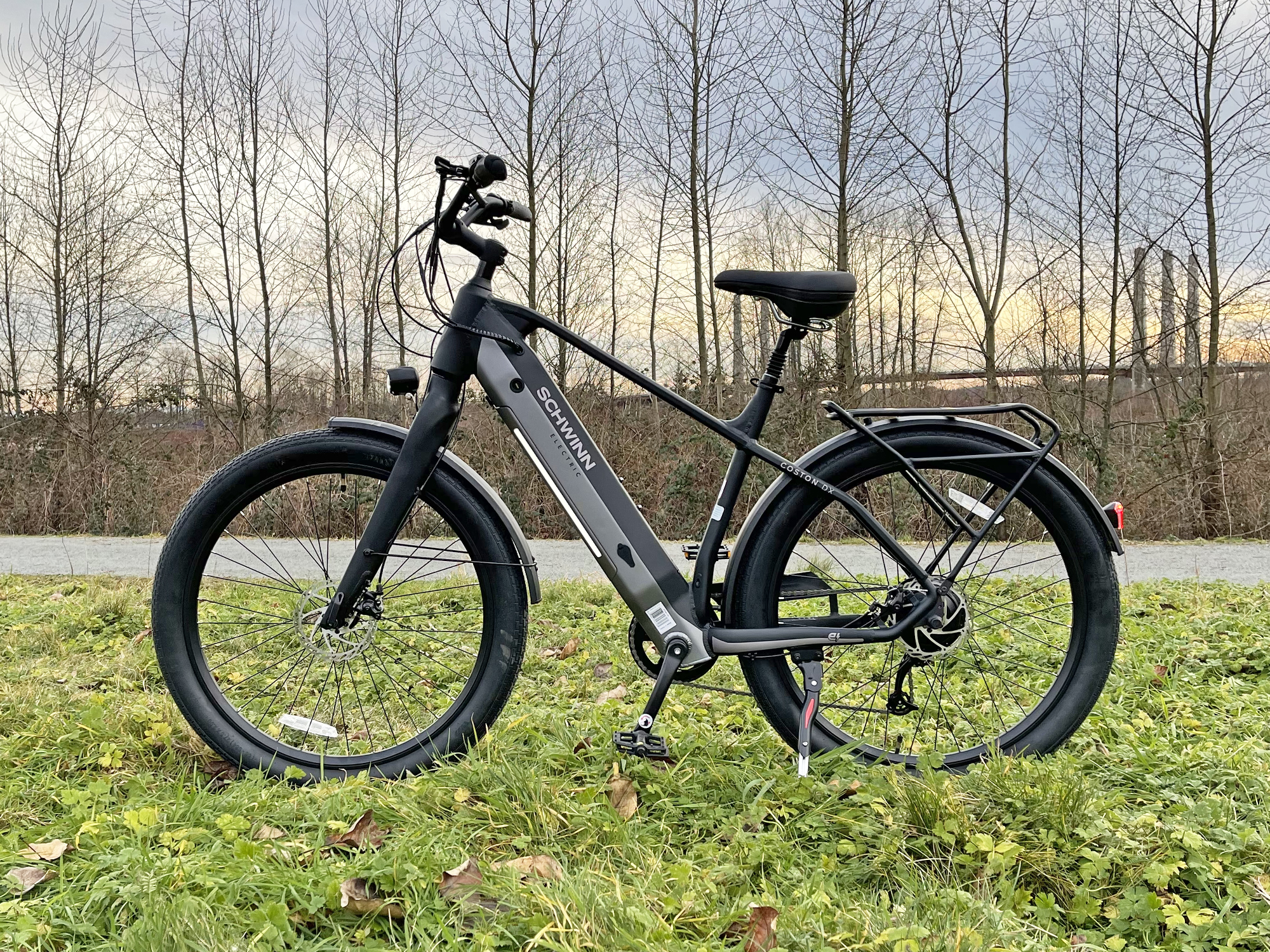

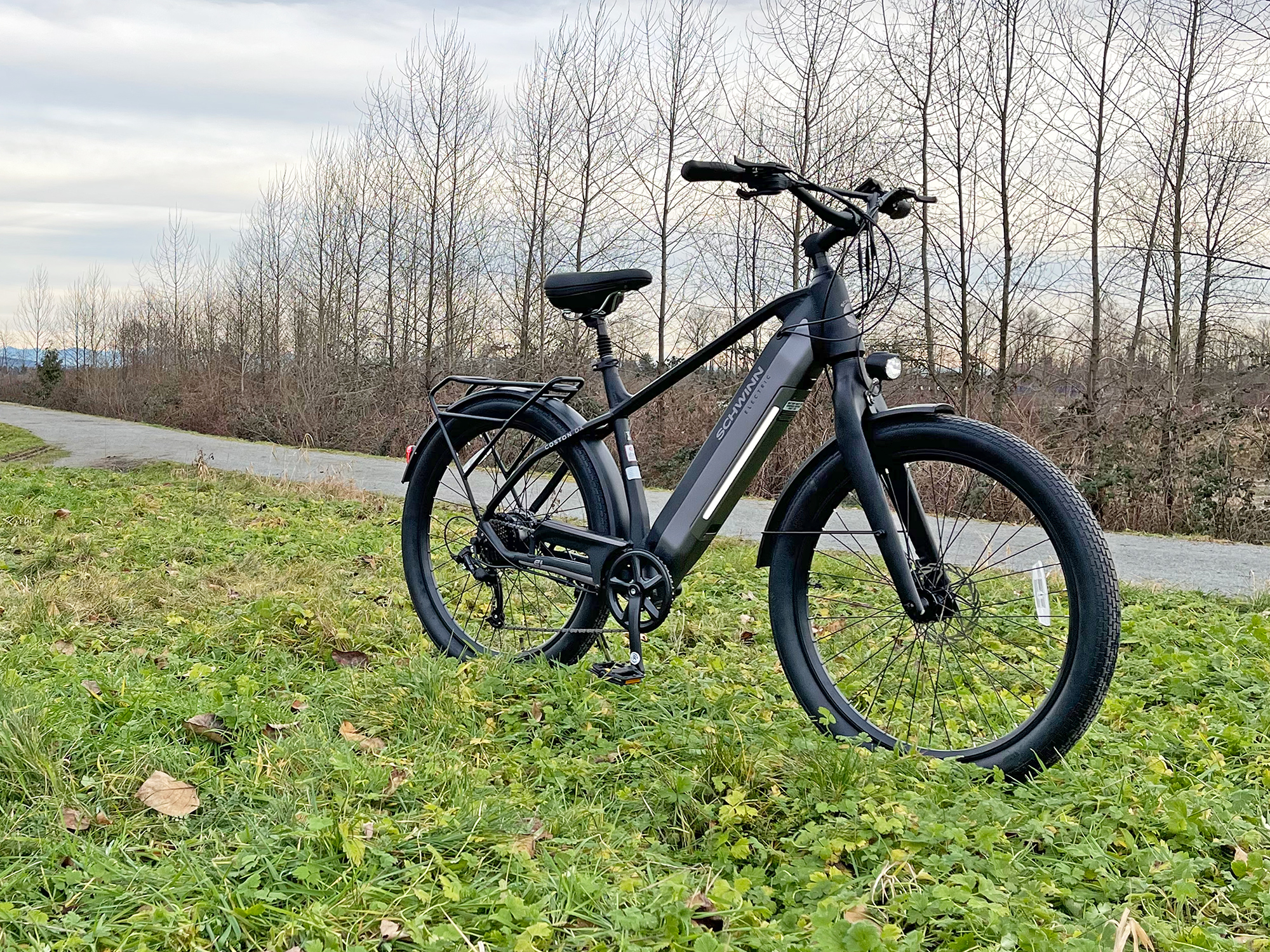

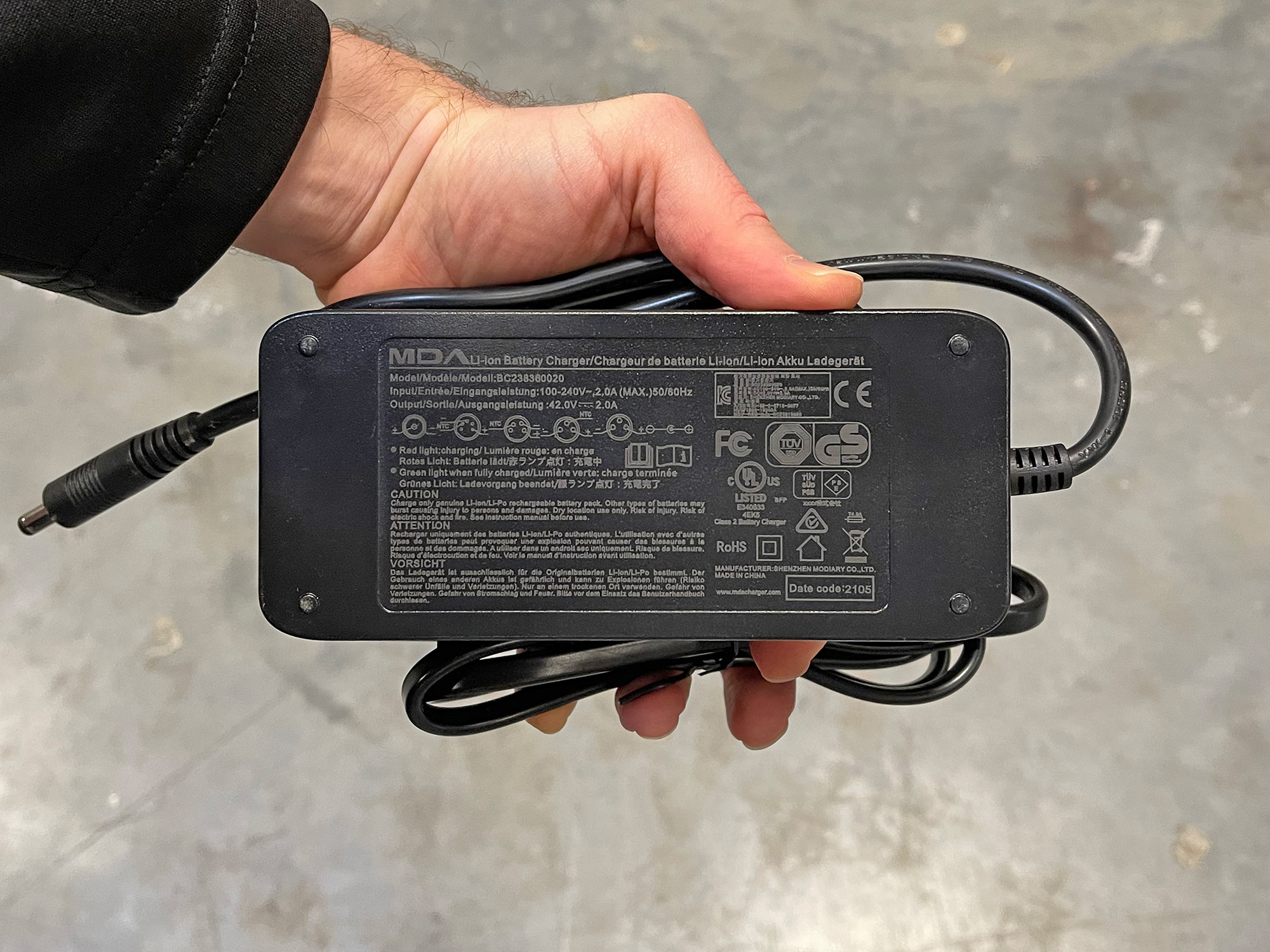
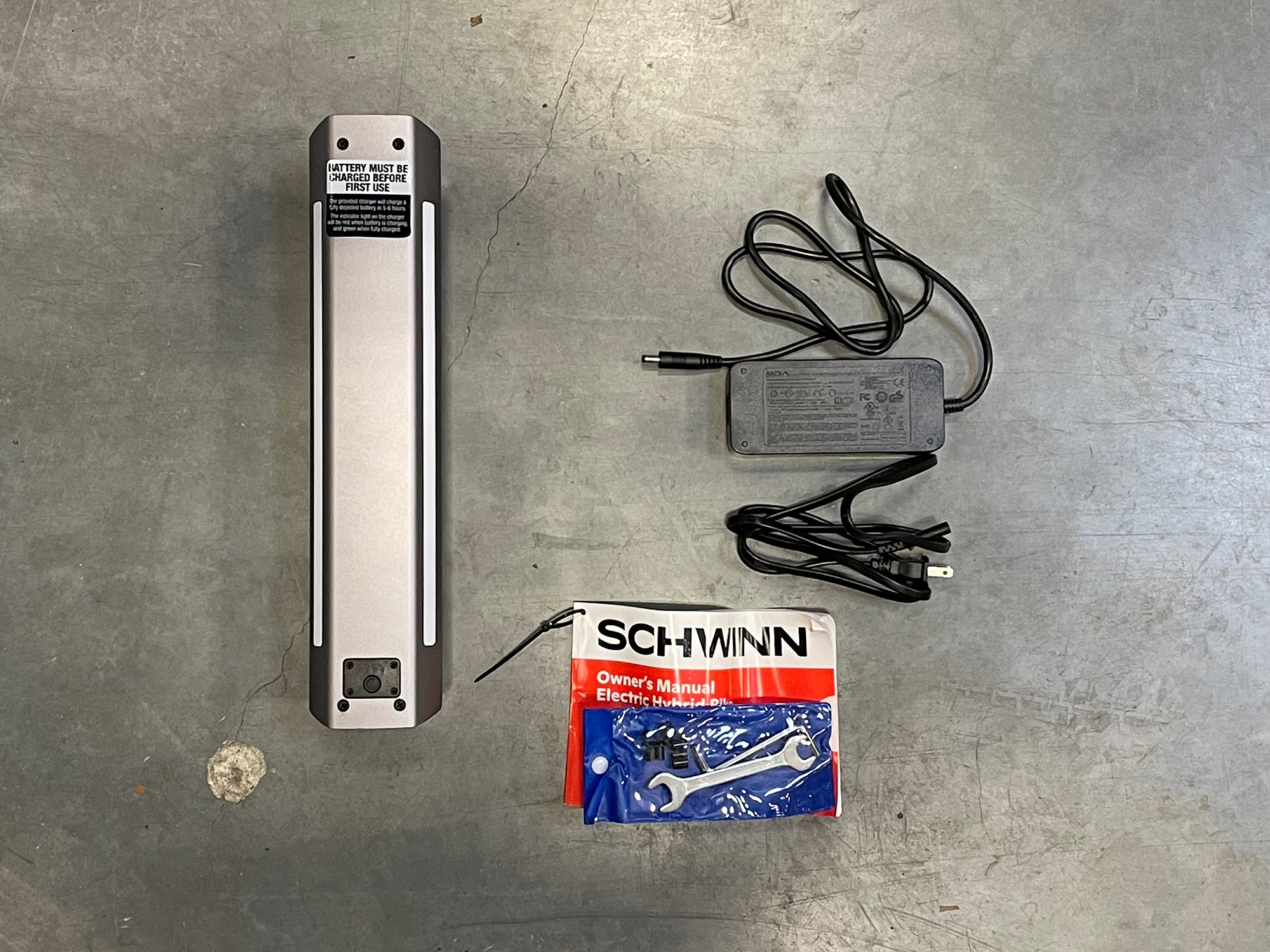
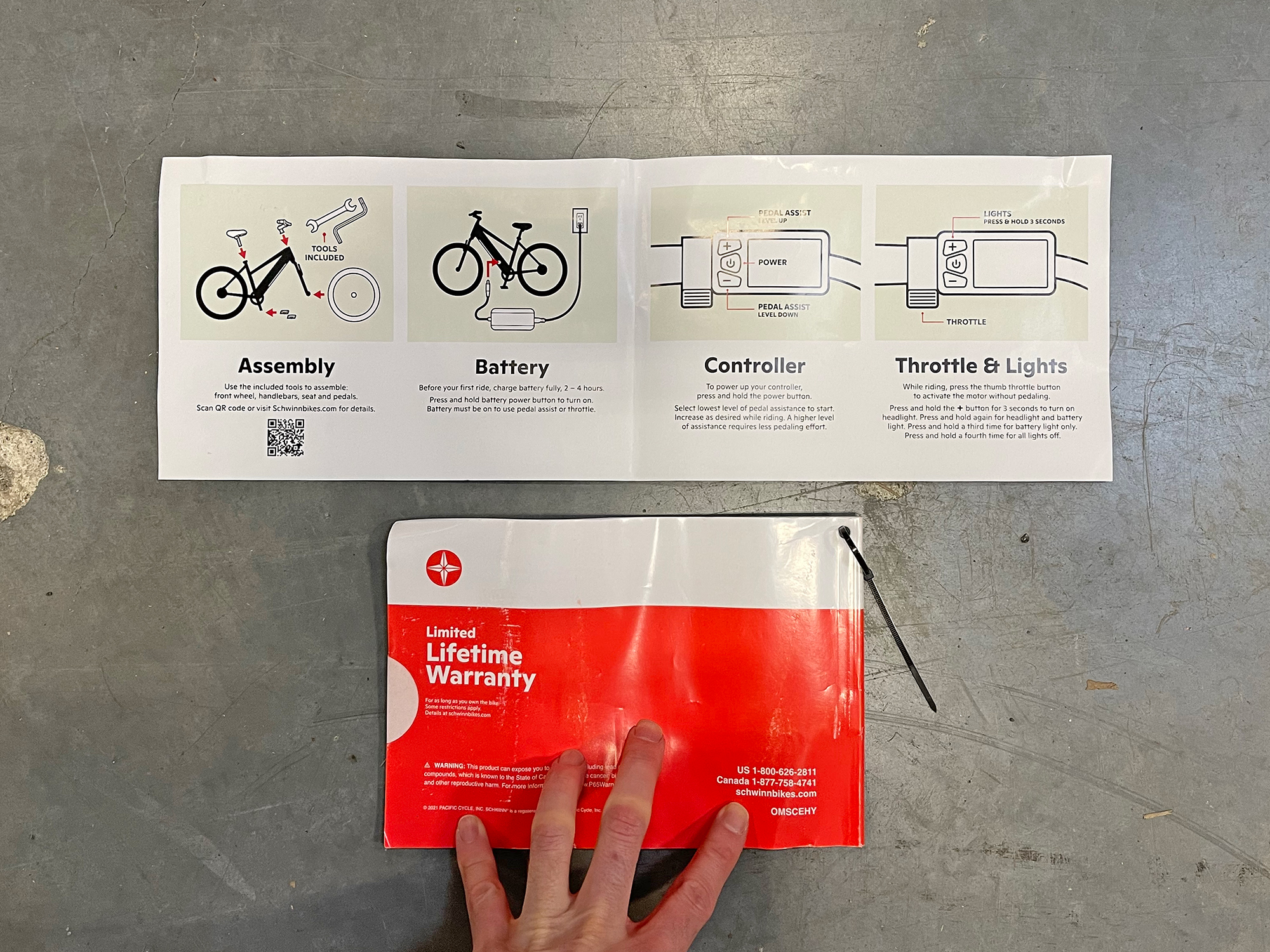
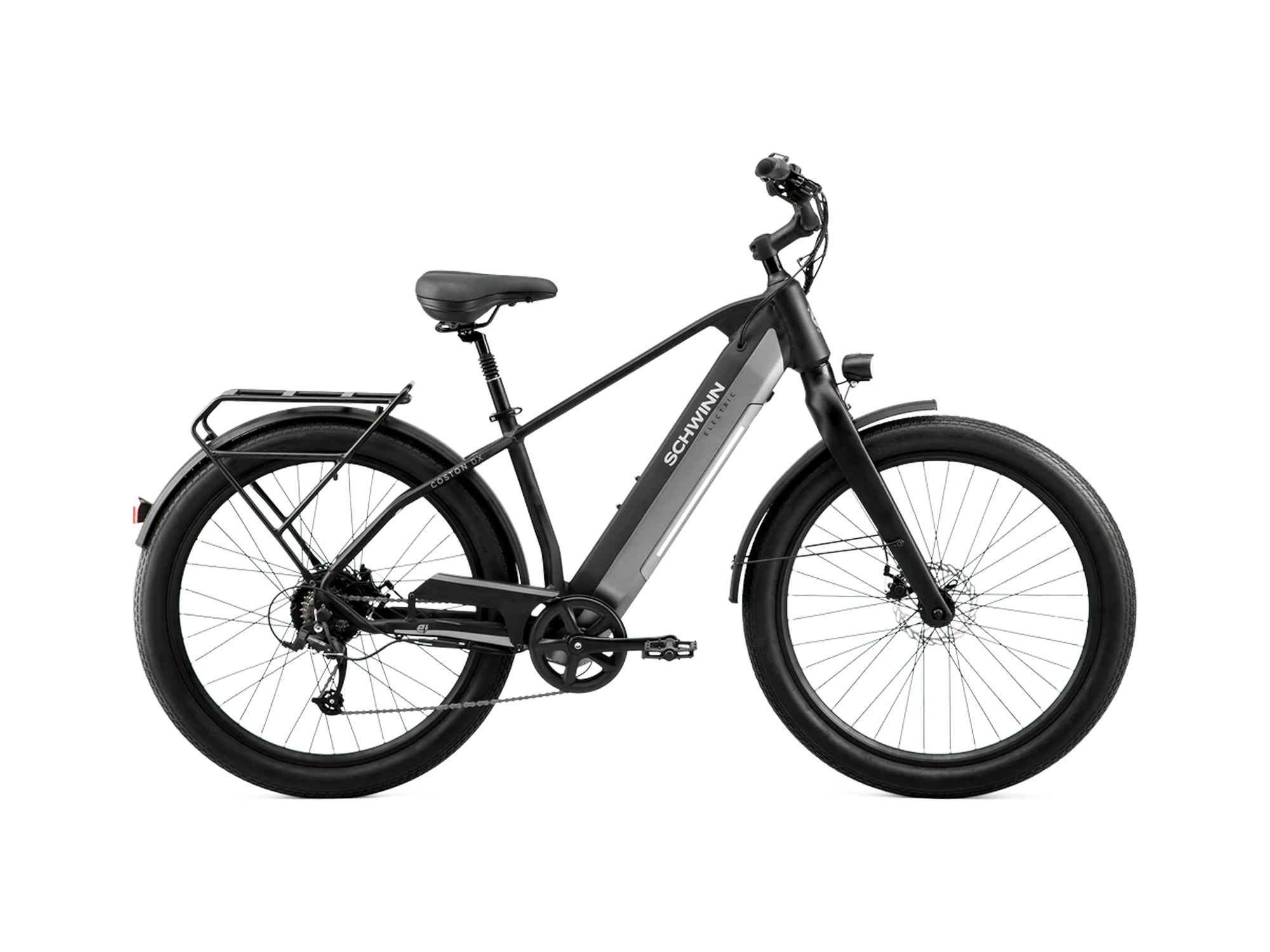
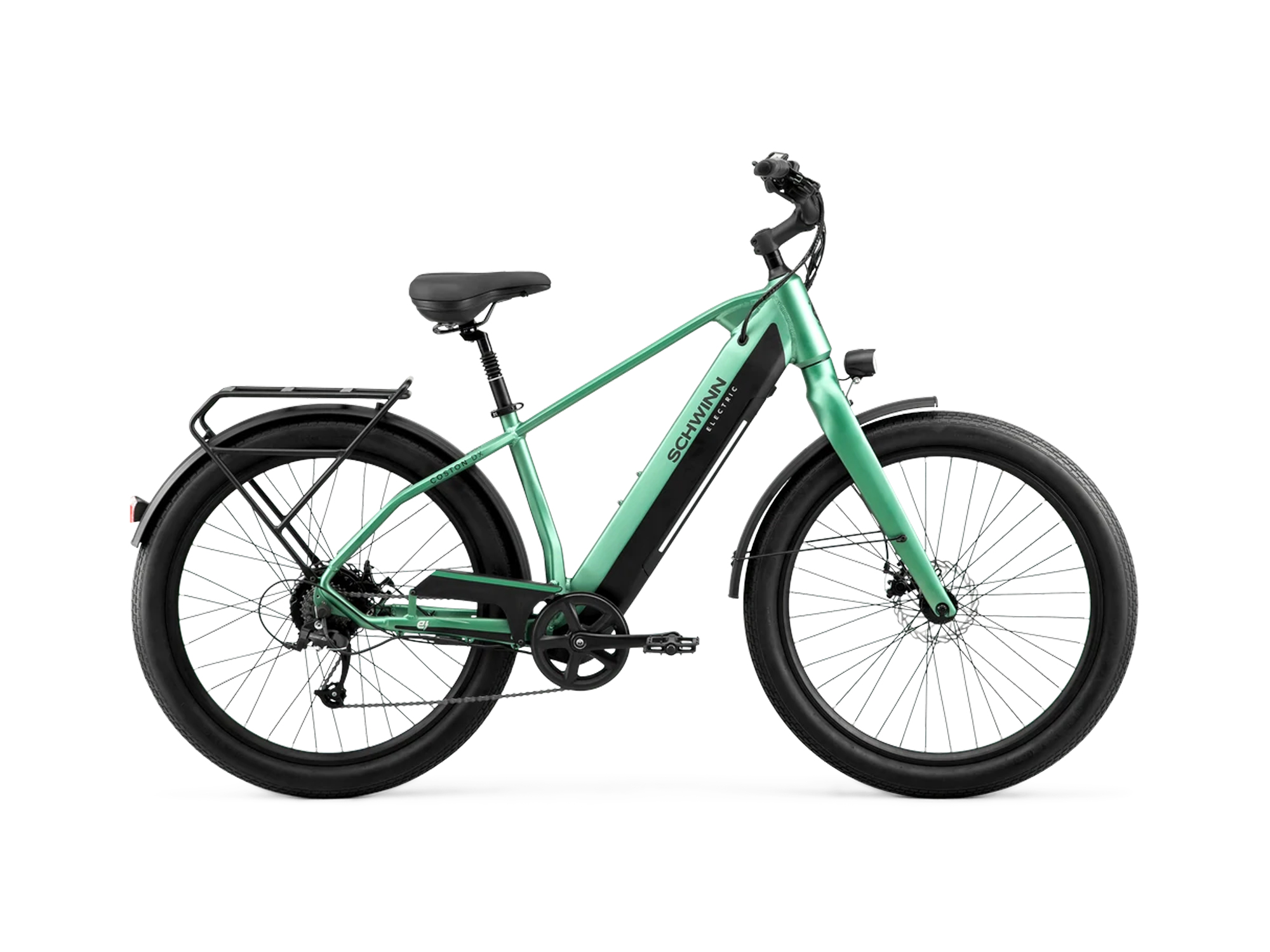
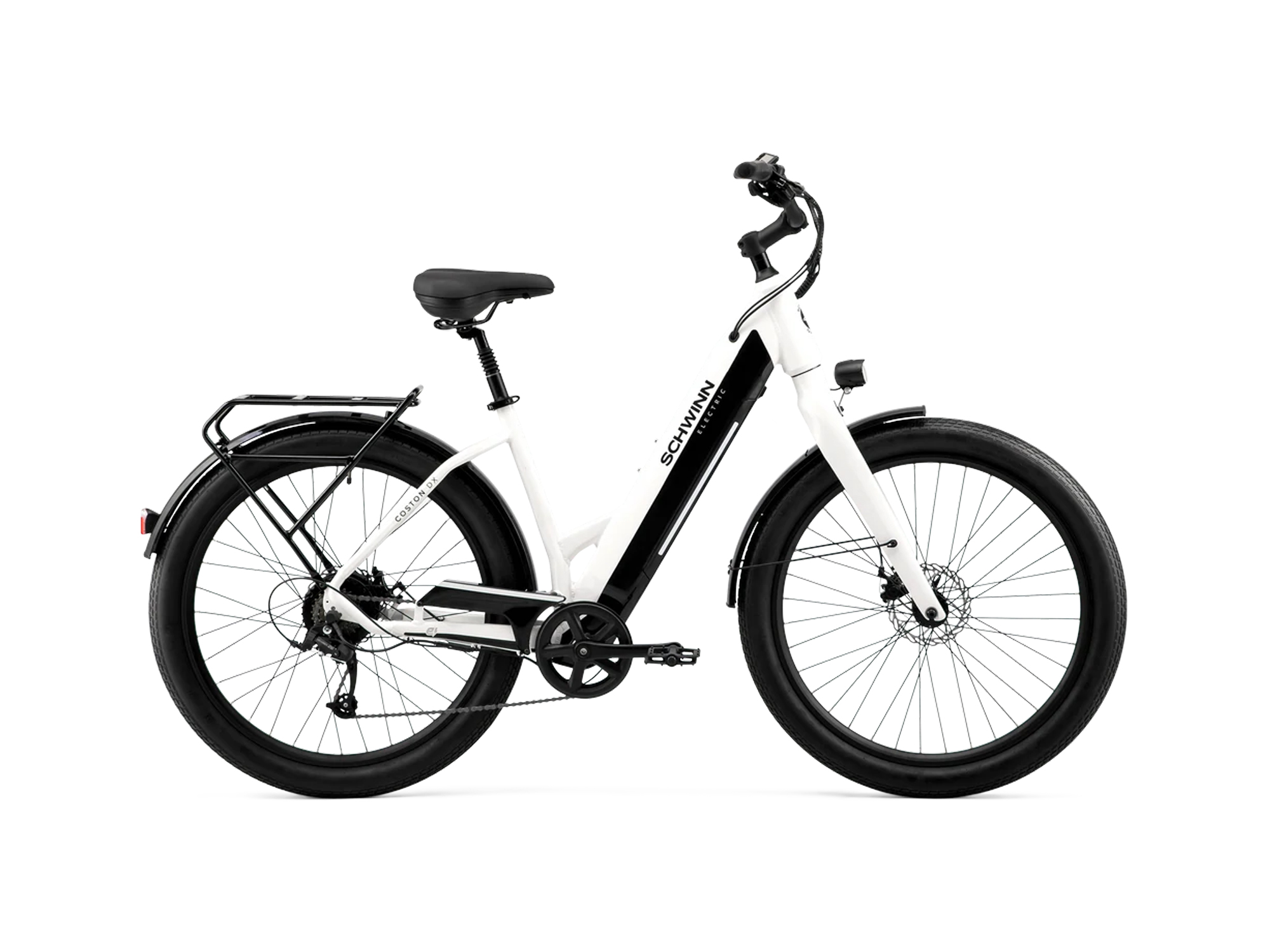
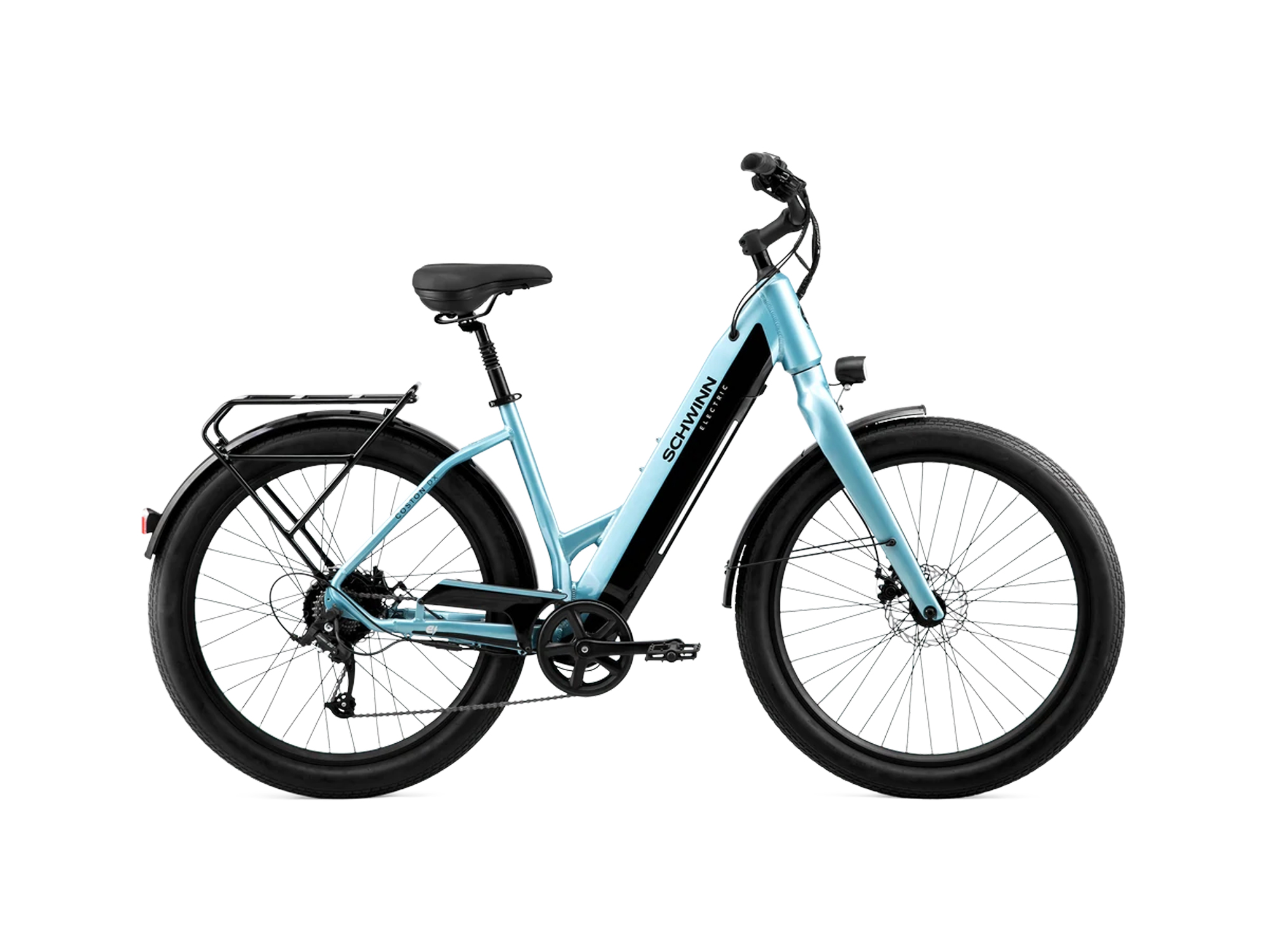

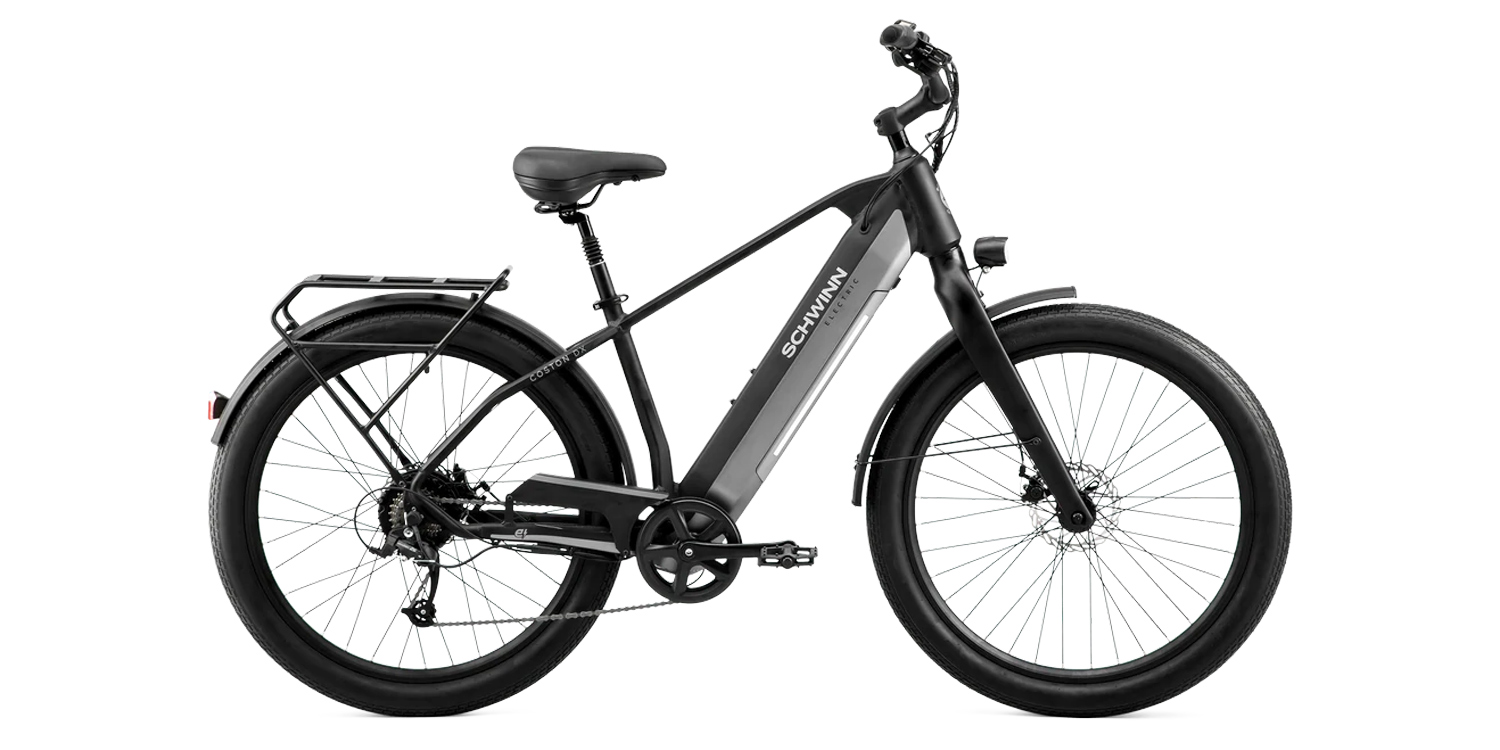
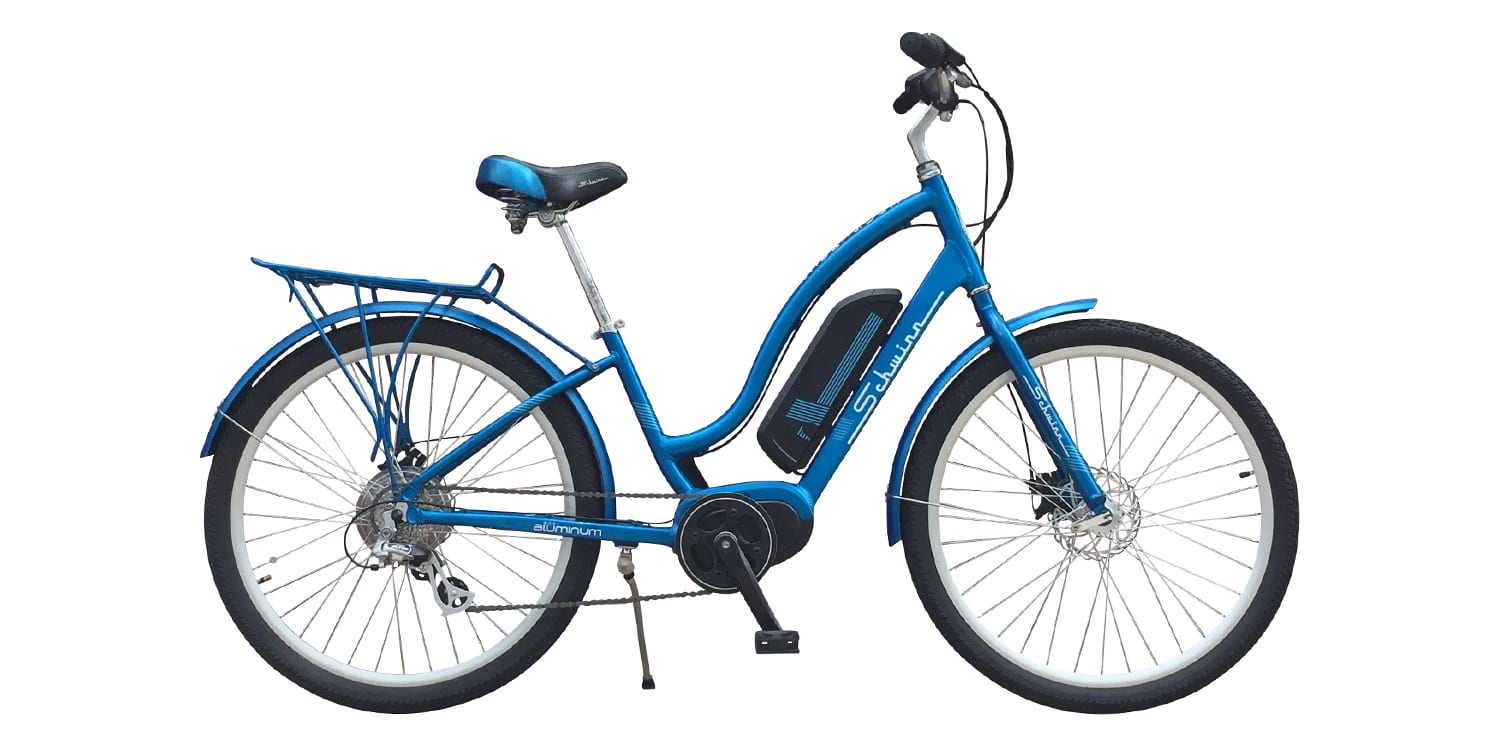
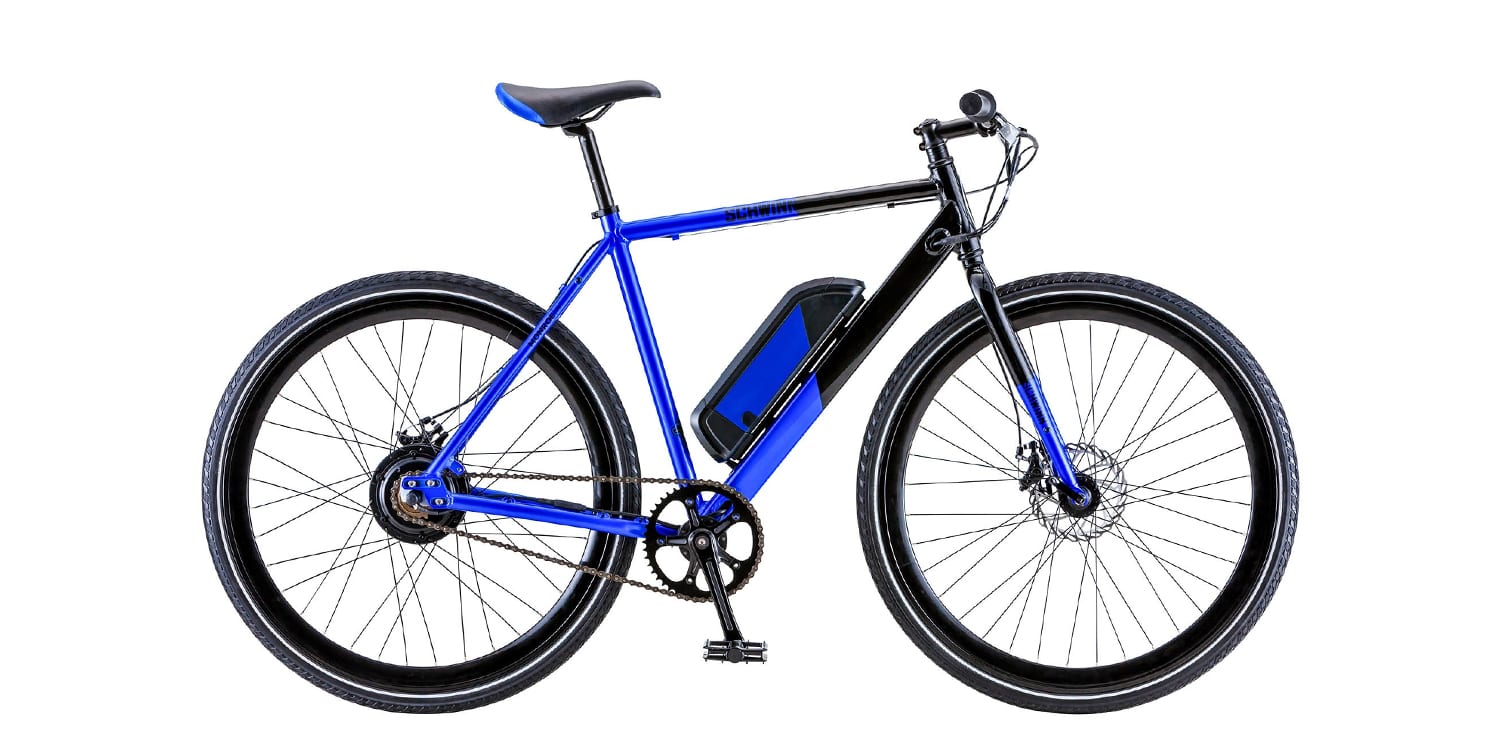
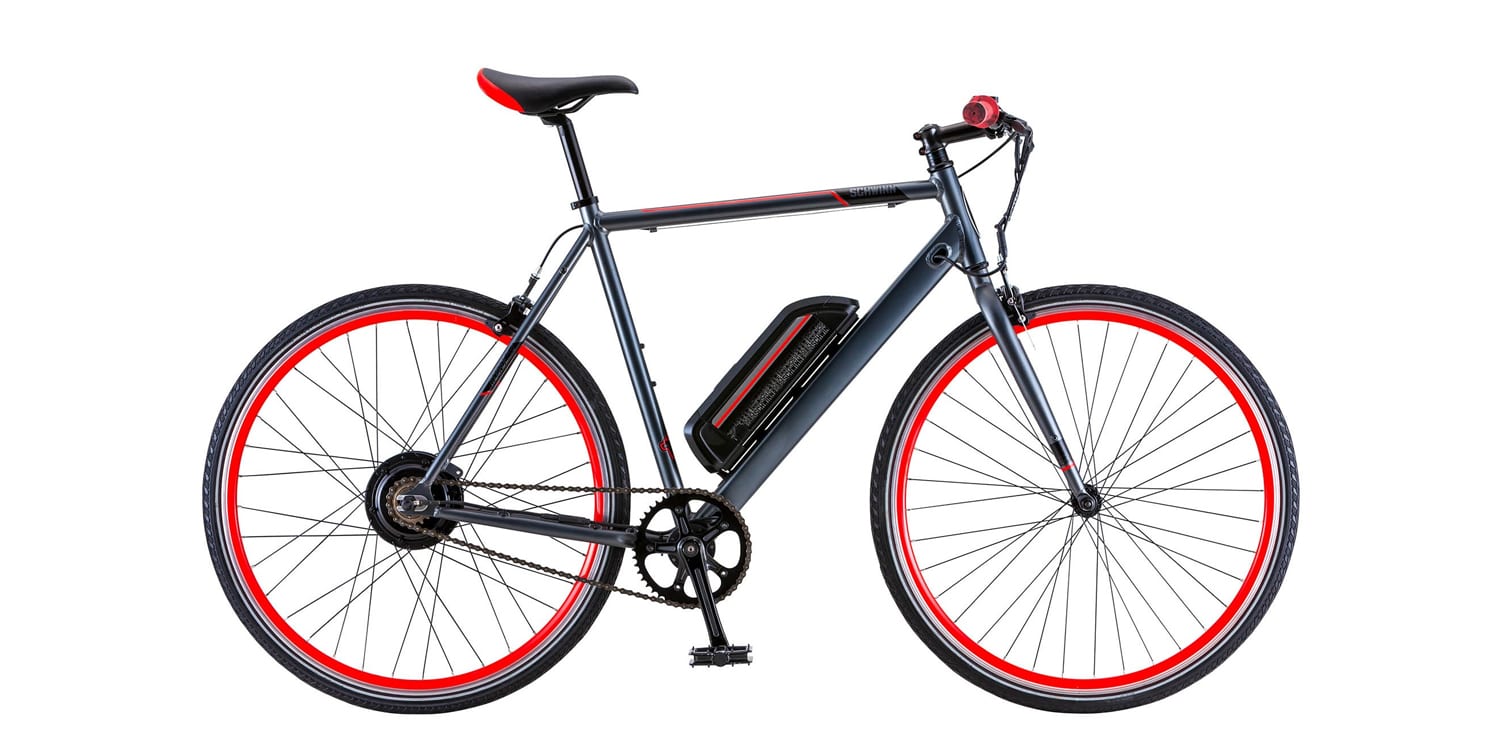
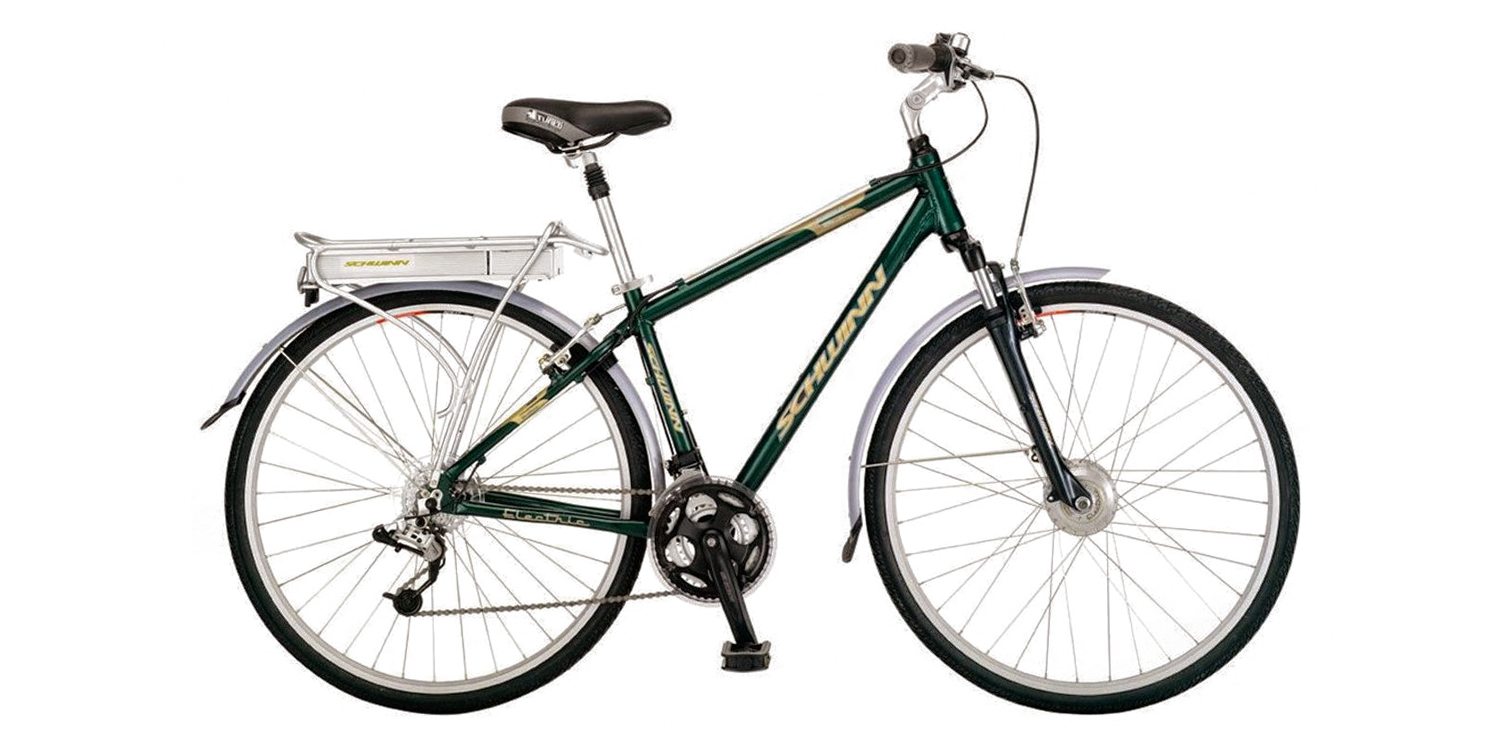
Mark says
Such a small watt motor (250) on such a bulky looking bike, and with a small battery to be at that high of a price point, does not seem like it will sell very well. There are so many other better brand’s out there offering a front suspension, hydraulic brakes, 500 watt motor, 48 Volt 14 to 16 ah battery, on a similar framed ebike that it’s not obvious that Schwinn did much in the way of ‘homework’ on the potential market for a bike with this configuration.
Court says
Hi Mark! I had similar feelings. The upside is the nice clean look, trusted brand, and all of the sizes and colors. To me, the $1.5k to $2k price tag for the Marshall or one of the Coston models is actually on the entry/low end these days as everyone is raising prices. I think that this ebike checks the right boxes for many people, especially if you’re just riding in a neighborhood for fun. I noticed many improvements since their first generation of electric bicycles, and my goal is to just cover a variety of products from different companies at different prices :)